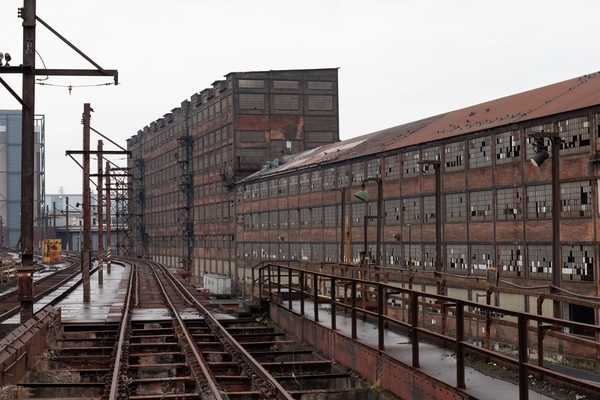Ten years ago, Princeton economists Anne Case and Angus Deaton penned a seminal paper, coining a disquieting term: “deaths of despair.” At the time, the general public and media intelligentsia may not have known what this phrase meant — but they would quickly find out.
In 2014, life expectancy in the U.S. dropped for the first time in decades. It was a slight drop — 78.94 to 78.91 — but, nevertheless, a concerning sign. Then, in 2015, Americans’ life expectancy fell again. This continued to happen in 2016, 2017, and 2018.
What was happening?
Around this time, the media became obsessed with two regions formerly beloved for their idyllic towns: Appalachia and the Rust Belt, to America’s talking heads, became synonymous with poverty, drugs, and violence. The sense of idyll quickly faded. To quote Lightning McQueen from Cars, this region became the new “hillbilly hell” — the punching bag the media loved to hate.
The simplest version of events — repeated ad nauseam over the past decade — describes how deindustrialization desecrated the Rust Belt and robbed it of hundreds of thousands of jobs. As millions fled, the less fortunate became trapped, condemned to a life of privation. As a result, addictions began to rise; drugs poured into the cities; suicides increased.
According to Case and Deaton’s 2015 research, white Americans suffered a “marked increase” in mortality rates between 1999 and 2013. The alarming trend was “unique to the United States” and “confined to white non-Hispanics.” In every other racial group, mortality rates continued to decline.
“This increase for whites was largely accounted for by increasing death rates from drug and alcohol poisonings, suicide, and chronic liver diseases and cirrhosis,” they wrote. “Rising midlife mortality rates of white non-Hispanics were paralleled by increases in midlife morbidity. Self-reported declines in health, mental health, and ability to conduct activities of daily living, and increases in chronic pain and inability to work, as well as clinically measured deteriorations in liver function, all point to growing distress in this population.”
A subsequent 2017 study revealed, “Rural areas with higher densities of working-class WNHs [White non-Hispanics] saw the largest increase in mortality.”
In short, middle-aged, white, blue-collar Americans without college degrees had been left behind, victims of automation and overseas markets, sparking a rise in “deaths of despair” — that is, deaths “due to suicide, drug- and alcohol-related overdoses, and alcohol-related liver diseases . . . .”
To make matters worse, the racial makeup of those primarily affected by the epidemic effectively excluded them from the broader national conversation about victimhood and equity. Big cities like Los Angeles and San Francisco became popular case studies for poverty, drug abuse, and homelessness, but the Rust Belt was largely left out of the analysis.
In 2016, a relatively unknown Yale Law School graduate, JD Vance, drew attention to the problem with his 1# New York Times bestseller, Hillbilly Elegy: A Memoir of a Family and Culture in Crisis. Vance, who grew up in Appalachia, exposed the reality of the region with incisive clarity. The book, a smashing success, propelled him to stardom.
Over the years, Vance has blamed various culprits for the unraveling of the working class, sometimes accusing the people he grew up with of “laziness,” and other times faulting the government for stealing their jobs.
Both can be true at once. It’s true that the government has failed this region. It’s also true that the drug epidemic plaguing the people here is, ultimately, an issue of self-governance.
“Drugs are the economy here,” one Ohioan said about his town, Ironton, a few hours from where Vance grew up. “You either sell them, buy them, or treat people for abusing them.”
In 2022, the Buckeye State’s drug overdose death rate amounted to 45.6 per 100,000, surpassing the national average of 31.3. Ohio’s neighbor, West Virginia, suffered the highest overdose death rate in the nation: a staggering 80.9. By comparison, California’s rate equaled 26.9.
Amazingly, many Americans remain entirely unaware of the true condition of much of rural America. It’s the furthest thing from a cause célèbre imaginable. The mainstream media rarely breathe a word about it, other than to mock or condemn the supposedly “backward,” “racist” yokels and hicks who reside here.
But America can’t afford to leave them behind.
In a world where the marginalized are supposed to have a voice, these are the forgotten, voiceless sufferers. In an age where marching for foreign causes is perceived as glamorous, these are the victims the media refuses to see.
Ten years after Case and Deaton’s paper rocked the world, life expectancy in the U.S. has climbed back up to pre-2015 levels. Yet, for white working-class Americans in states like Ohio and West Virginia, the situation has hardly improved. How can we, in good conscience, accept the fact that, for thousands of our fellow citizens, “deaths of despair” continues to be more than just an academic term reserved for white papers but an ever-present, inescapable reality? As a nation founded of, by, and for the people, turning our backs on these folks is more than just inappropriate. It’s shameful.
Convention of States, a nationwide grassroots organization, is working towards a two-pronged solution. While we understand that the federal government has, in many instances, failed its citizens, we also recognize the centrality of self-governance in charting a new path forward. On the one hand, we seek to return power from corrupted politicians to the states; on the other, we aim to nurture a sense of civic duty and personal responsibility among “We the People.”
Washington, DC, isn’t coming to the rescue. It’s time to send a message to every down-on-their-luck, working-class American: You matter. Your story matters. You’re a valuable, important part of this country. There’s hope for a better tomorrow. But it must begin with you.
Sign the Convention of States petition to show your support.
The Ones We Left Behind: Restoring America’s Rust Belt
Published in Blog on April 10, 2025 by Jakob Fay






